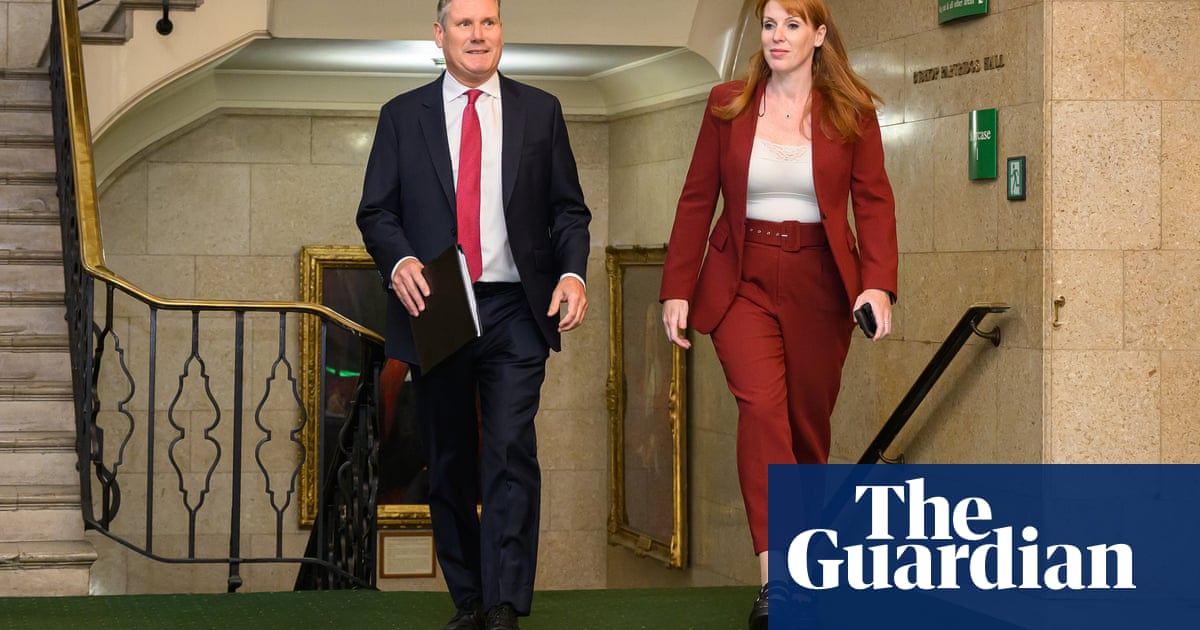
Amid uninspiring opinion polling and after a very close shave in Batley and Spen – which prompted an outpouring of triumphalism way out of proportion with Labour’s narrow win there – Keir Starmer has taken the opportunity to settle some scores. After a marathon nine-hour meeting of Labour’s ruling national executive committee on Tuesday, it was announced, as expected, that four leftwing groups had been proscribed: Socialist Appeal, Labour Against the Witchhunt, Labour in Exile Network and Resist.
Reports suggest that the move could see up to 1,000 Labour members effectively expelled from the party. It isn’t necessary to carry a torch for all or any of these groups to see the cynicism of the manoeuvre. For some, the decision to proscribe these groups has rekindled memories of Neil Kinnock’s war on the Labour left in the 1980s; indeed, Socialist Appeal is the fragment of Militant that remained in Labour after the rest of the organisation was driven out three decades ago. As for the others, it is unclear how many of their members are still in Labour. Membership is down by about 120,000 from its peak under Jeremy Corbyn.
No doubt the departures will cause little concern in the Labour leader’s office. There’s only so much the right can do to purge leftwingers from the party, but they can prompt many more to leave by demoralising them, convincing them that Labour is no longer a viable vehicle for social change – and here they’ve had some success. But the lost membership fees are taking a toll on the party’s finances. It was announced last week that about 90 Labour staff would be made redundant, with cash reserves down to just one month’s payroll.
All of this is a far cry from the soothing rhetoric of Starmer’s leadership campaign last year. He won Labour’s top job on what turned out to be a false prospectus: promising to bring factionalism to an end and to unite a troubled party after years of internecine warfare. Party members worn out by years of infighting were prepared to believe him, including a chunk of those who’d previously supported Corbyn. Now, however, his allies – among them Canterbury MP Rosie Duffield – hint that Labour’s “broad church” may simply be too broad.
Given that Duffield initially won her seat with the help of enthusiastic Corbynite campaigners, this sticks in the craw. But she’s not alone, and already there is pressure on Starmer to go further. The Times leader writer Oliver Kamm, for instance, has denounced Momentum as “a party within a party” and called for it to be proscribed too. The charge is ludicrous: Momentum is one faction among several, in a party that permits the existence of organised factions. Yet it is worth asking whether Labour remains feasible in its present form.
For all the mythology that surrounds it, Labour’s much-vaunted broad church has often been deployed as a sentimental rationalisation for ideological incoherence. Hilary Wainwright, in her classic study, observed that Labour was really two parties crammed into one: a democratic socialist party, aspiring to far-reaching social transformation, and a reformist party satisfied with humanising British capitalism, smoothing at least some of its rougher edges. The latter has held the upper hand for almost all of Labour’s history.
The Labour left could be tolerated by the right so long as it was kept in a subordinate role, a status that was perhaps easier for it to accept during the heyday of post-war social democracy. But Labour’s broad church has always been forced together more by electoral necessity – specifically by first-past-the-post, which presents smaller parties with formidable barriers to entry – than by shared commitments. Corbyn’s leadership tested the limits of this, and demonstrated how little common ground there now is between Labour’s left and right.
What we have, then, are (at least) two increasingly incompatible political projects, impeding one another’s development but still cursed to share the same unwieldy political vehicle. The most obvious route out of the impasse would be electoral reform. This still seems a distant prospect, not least because a Labour-led government is itself such a distant prospect. Yet it does enjoy strong backing among Labour members: 83% of those questioned want the party to support proportional representation, according to a recent poll.
Have these party members thought through the full implications of what would be likely to happen if there were a change in the electoral system? It is surely unlikely that the Labour party would survive for long in its current form, given the multiple mutual enmities contained within it, if a more proportional system was adopted. PR would potentially make a new party along the lines of Germany’s Die Linke or Spain’s Podemos electorally viable, though it would still need to draw substantial trade union support.
Labour’s 2019 manifesto has subsequently been much mocked in the press, and the party’s frontbenchers have tried to distance themselves from it. It has been largely forgotten that its key policies, in fact, generally polled well. In a vaguely functioning democratic system, these politics would have adequate representation in parliament, as would the interests of young people, renters and other marginalised groups now sidelined at Westminster. At present, only an embattled Socialist Campaign Group is left to serve as their standard-bearer.
Most discussion of Labour’s current crisis is ahistorical. The party’s collapse in so many old strongholds, from Scotland to the “rust belt” of England’s north and Midlands, has left it with a mountain to climb if it is ever to win a Commons majority again. Its internal strife, meanwhile, is the product of deep-seated political differences, and these can’t be wished (or purged) away. It’s one thing to say, as some still do, that Labour needs a left and a right wing to fly, but quite another when those wings are frantically flapping in opposite directions.
Tom Blackburn is a founding editor of New Socialist











